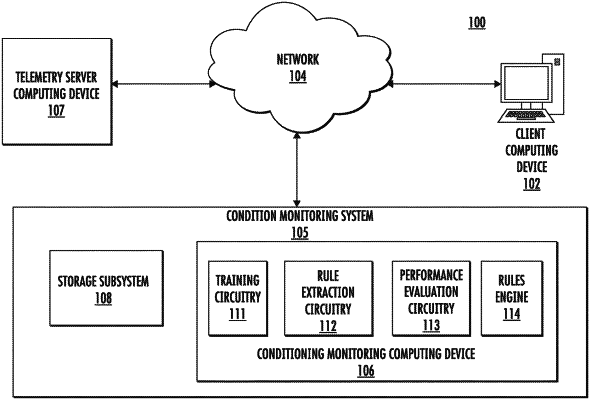| CPC F24F 11/38 (2018.01) [F24F 11/64 (2018.01)] | 20 Claims |

|
1. An apparatus comprising at least one processor and at least one non-transitory memory including program code to cause the apparatus to:
receive telemetry data from a monitored system, wherein the telemetry data comprise data captured by one or more sensor devices associated with the monitored system;
process the telemetry data to generate:
an anomaly score set for the telemetry data, by a machine learning anomaly detection model, wherein the anomaly score set comprises one or more anomaly scores indicative of a level of a fault associated with the monitored system; and
a rule-based result set for the telemetry data in accordance with at least one predefined rule by a rule engine;
determine, based on an analysis of the anomaly score set and the rule-based result set, if the telemetry data are associated with an undetected fault of the monitored system and if the machine learning anomaly detection model requires retraining; and
in accordance with a determination that the telemetry data are associated with the undetected fault of the monitored system, the machine learning anomaly detection model is configured to:
generate at least one extracted rule data object associated with the fault, wherein the at least one extracted rule data object comprises a new rule to fix the fault;
cause transmission of data indicative of the fault of the monitored system and the at least one extracted rule data object to a device associated with the monitored system for display; and
perform one or more actions to fix the fault associated with the monitored system based on the at least one extracted rule data object.
|